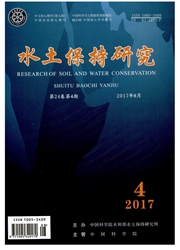

 中文摘要:
中文摘要:
利用辽宁省1961—2006年的气温、降水等资料。分析了近46a来辽宁地区气温和降水变化对冻融作用与冻融侵蚀的影响。结果表明:辽宁地区气候变化主要表现在年平均气温的波动上升且十分显著,而降水呈波动下降趋势;年内冬、春季节平均气温增加率较高,以2—4月比较强烈;冬季降水基本不变,其它季节降水均减少。在气温和降水变化的情况下,辽宁地区土壤冻结期有推后的趋势,解冻期有提前的趋势,所以冻融期有所缩短,土壤化通期有所提前。此外,土壤冻结深度有减小的趋势;随着初春(3月)温度的显著上升,冻融侵蚀有加剧的趋势。
 英文摘要:
英文摘要:
In this paper, the material of temperature and precipitation in Liaoning province during the period of 1961-2006 was used to analyze the impact of the variation of temperature and precipitation on the freeze-thaw function and freeze-thaw erosion. The results show that the annual mean temperature has increased distinctly,together with a decreasing precipitation. Temperature mainly rises in spring and winter, especially from February to April. Meanwhile, in the area, the variation of precipitation in winter is stable,while other seasons all have decreased respectively. With the variation of temperature and precipitation in Liaoning province, the frozen date of soil has a postponed trend and the thaw date of soil has an advanced trend. Therefore, the frozen duration of soil become short and the thaw duration of soil also become short. In addition, the decreasing of the frozen soil depth is in accordance with the climate change. With the rising of air temperature in the spring (rising of the air temperature in March) ,the freeze-thaw erosion has an aggravated trend.
 同期刊论文项目
同期刊论文项目
 同项目期刊论文
同项目期刊论文
 期刊信息
期刊信息
